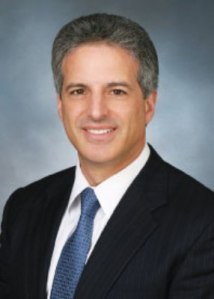Though Limited, Distress Opportunities in New York City Exist
By Carl Gaines March 15, 2012 9:30 am
reprintsAt the opening sesion of the CRE Finance Council Distressed Debt Summit 2012, panelists touched upon several distress-related topics relevant to the New York City market. Among these were the volume of distress hitting the five boroughs and the speed at which banks are moving troubled loans off their books.

Shortly before the panel, the association’s CEO, Stephen Renna, told The Commercial Observer that he’s heard some take the popular belief that deleveraging should be happening faster, “so that pricing can adjust.” He added that CREFC would be holding another debt summit in Santa Monica later this spring.
On the panel, Tom Fink, a Trepp managing director, spoke about the volume of distress out there. “There’s still a sizable flow into the delinquency pipeline,” he said. “It reflects the product mix you would think of because of the size of the CMBS pipeline—about a third of its retail, a third of its office.” The multifamily and hotel shares of distress have dropped significantly, Mr. Fink added.
Geographically, Mr. Fink said, the distribution reflects where the loans were made—California has the largest number, but, he added, “New York is up there.” Key, he said, was to differentiate Manhattan from the outer boroughs “If you cross the river in any direction, I think you’re still looking at distressed retail, distressed office.”
According to a recent Ernst & Young survey on non-performing commercial real estate loans, there is, overall in the U.S., currently tremendous opportunity for investors interested in tapping into the distressed market. With nearly $1 trillion in U.S. commercial real estate loans maturing in the next five years, Chris Seyfarth, a partner in E&Y’s Transaction Real Estate practice, said that investors expect the market for these non-performing loans to stay active for the next four years or so.
“In 2011, investment activity was at its highest level since we began our survey four years ago,” Mr. Seyfarth said. “According to those who responded, the expectation is that sales volume will remain high in 2012.”
Following the CREFC panel, Mr. Fink, when asked about the velocity of banks moving distressed loans off of their balance sheets and whether or not this was happening fast enough, told The Commercial Observer that it was a complex question. Depending upon the availability of capital, the “process takes a while,” he said. Of investor interest in these loans in the New York City area, he pointed out that many investors want trophy Manhattan product—the distressed volume of which is low.


